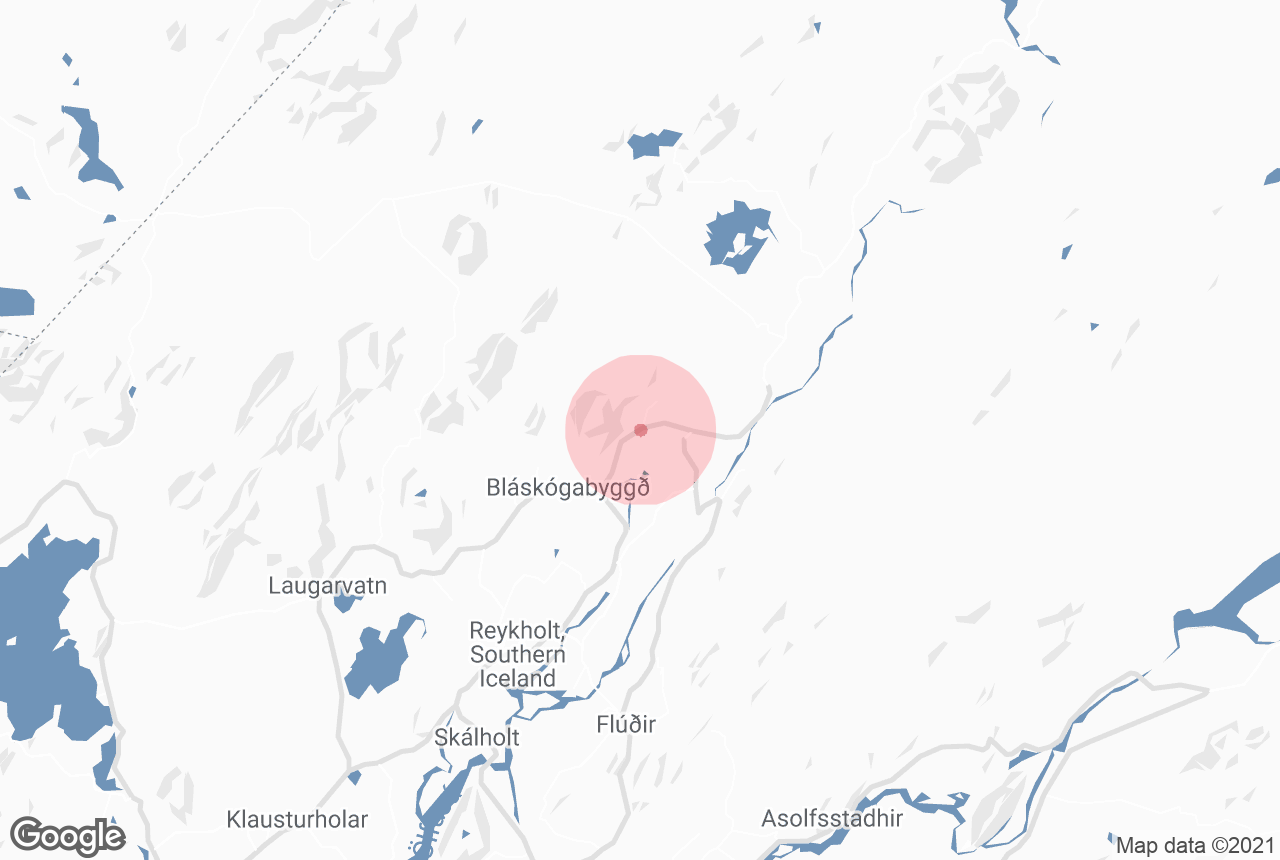This most famous and former largest spouting hot spring of the world probably was created during an extended earthquake period at the end of the 13th century. According to one of the annals, two large hot springs were created in the Haukadalur Valley in 1274, and many were ruined and disappeared. Silica deposits have created a mound around Geysir and its bowl measures about 18 metres across. The main natural shaft of the spring is 18 m deep and 2 m across.
For centuries on end, Geysir erupted and attracted tourists, but after the turn of the 19th century its activity diminished and after 1916 it has been very irregular. Scientists concluded that its cooling surface was too large and reduced it in size with good results for a spell. The highest measured eruptions reached over 80 m and before it erupted it rumbled and small tremors were felt. The hot spring area surrounding Geysir is about 500 m long and 100 m wide.
The ancient silica deposits cover a much larger area, close to 200 thousand square meters, which confirms the existence of a much larger hot spring area in the past. There are dozens of hot springs within the present active area and some of them spout as Geysir did. The most prominent one is Strokkur (The Churn), which spouts at intervals of 3-5 minutes. The hot spring area is fenced off and was declared inviolate in 1953.
A Geyser is a hot spring, which erupts intermittently in a column of steam and hot water. Some geysers erupt at regular intervals, but most erupt irregularly, the intervals ranging from a matter of minutes to years. The length of time of the eruption varies with the geyser, from seconds to hours. The height of the column ranges from about 1 m (3 ft) to about 100 m (328 ft), and the amount of water ejected in a single eruption varies from a few litres to hundreds of thousands of litres.
A geyser erupts when the base of a column of water resting in the earth is vaporized by hot volcanic rock. The force with which the water column is expelled depends on its depth. The weight of the water column increases with its depth. The weight, in turn, increases the pressure exerted on the base of the column, thereby increasing the boiling point of the water there. When the water finally boils, it expands, driving some water out into the air. With the weight of the column reduced, the pressure correspondingly drops, and the boiling point of the water remaining in the column falls below its actual temperature. Thereupon, the entire column instantly vaporizes, causing the geyser to erupt.
Almost all known geysers are located in three countries of the world—New Zealand, Iceland, and the United States. The most famous geyser in the world is Old Faithful in Yellowstone National Park in the United States, which expels about 38,000 to 45,000 litres (10,000 to 12,000 gallons) at each eruption. Old Faithful erupts at intervals of between 37 and 93 minutes, its column rising to a height of between 38 and 52 m (125 and 170 ft). The geyser gives warning of its impending activity by ejecting jets of water 3 to 7.6 m (10 to 25 ft) high.
Eruption intervals depend on such variables as the atmospheric pressure, the supply of heat, the amount and rate of inflow of subsurface water, and the nature of the geyser tube and its underground connections.





